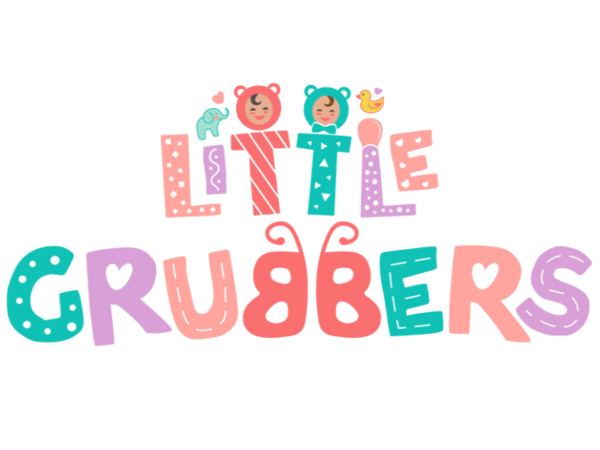The Ups and Downs of Baby Growth Spurts
One day, your baby is eating like normal. The next, they’re suddenly ravenous, waking up at odd hours, and fussier than usual. Welcome to the world of baby growth spurts—a phase that can leave parents wondering if they’ll ever sleep again!
Growth spurts are completely normal, but they can disrupt your baby’s feeding routine, sleep schedule, and overall mood. Knowing when to expect them, what to do, and how to adjust feedings can make a world of difference in keeping both you and your little one happy.
Let’s dive into the signs of growth spurts, how they affect feeding habits, and practical ways to handle these changes without stress.
1. What Are Growth Spurts and When Do They Happen?
A baby growth spurt is a period of rapid growth where your baby may eat more, sleep differently, and seem fussier than usual. These spurts typically occur at predictable times:
📆 Common Growth Spurt Ages:
- Newborn (7-10 days old)
- 2-3 weeks
- 4-6 weeks
- 3 months
- 6 months
- 9 months
- 12 months
Each baby is different, but these timeframes are when many parents notice feeding changes.
How Long Do Growth Spurts Last?
Growth spurts usually last a few days to a week. During this time, babies may need extra feedings and comfort before their routines stabilize again.
2. Signs That Your Baby Is in a Growth Spurt
How can you tell if your little one is going through a growth spurt? Watch for these common signs:
🍽 Increased hunger – Your baby may want to nurse or take a bottle more frequently, sometimes every 1-2 hours.
😢 Fussiness – Babies can be crankier due to increased appetite or disrupted sleep.
😴 Changes in sleep patterns – Some babies sleep more (to conserve energy for growing), while others wake up hungry at odd hours.
📏 Sudden weight and length gain – You may notice their clothes fitting tighter within days!
These temporary changes can feel exhausting, but they’re a sign that your baby is growing strong and healthy.
3. How Growth Spurts Affect Feeding Habits
Growth spurts can temporarily change how your baby eats, whether they’re breastfed, formula-fed, or eating solids.
🍼 Breastfed Babies:
- May cluster feed (feeding frequently in short bursts).
- Might pull at the breast or seem fussier, signaling a need for more milk.
- Your body will naturally increase milk supply to meet demand—just keep nursing!
🥄 Formula-Fed Babies:
- May drink more ounces per feeding or request extra bottles.
- Follow their hunger cues and offer more if they seem unsatisfied.
🍎 Babies Eating Solids (6+ Months):
- They may eat larger portions or ask for more meals/snacks.
- Stick to a balanced baby feeding schedule but allow some flexibility during growth spurts.
- A self-feeding tool like the Little Grubbers 3-in-1 Baby Spoon™ can help them explore new textures and eat more independently.
4. Tips for Handling Growth Spurts Without Stress
✔ Follow Your Baby’s Hunger Cues
Rather than sticking to strict feeding schedules, let your baby’s appetite guide their intake during growth spurts. If they’re hungry, feed them!
✔ Increase Feedings Gradually
If your baby is suddenly drinking way more formula or breast milk, don’t worry. Offer more ounces per bottle or nurse on demand to keep up with their needs.
✔ Expect Sleep Disruptions (and Adjust Accordingly!)
Night wakings for extra feedings are common. Try offering an extra feeding before bedtime to keep them fuller longer.
✔ Keep Solids Balanced (For Older Babies)
If your baby is eating solids, offer a mix of proteins, healthy fats, and fiber to keep them full. Great options include:
- Mashed avocado 🥑
- Scrambled eggs 🍳
- Soft-cooked veggies 🥕\
- Whole-fat yogurt 🥄

✔ Offer Comfort and Extra Cuddles
Growth spurts can make babies fussier and clingier. Try extra snuggles, babywearing, and skin-to-skin contact to help them feel secure.
✔ Be Patient—It’s Temporary!
These changes can feel overwhelming, but they won’t last forever. Most babies return to their normal eating and sleeping habits within a few days.
5. What If My Baby Refuses to Eat?
Sometimes, babies eat less instead of more during a growth spurt. This can happen if they are:
- Teething – Sore gums can make eating uncomfortable. Try chilled teething rings or soft foods.
- Overstimulated – Too much activity can distract them from feeding. Create a calm, quiet feeding environment.
- Tired or cranky – Overly tired babies may lose interest in eating. Try feeding them before they get too sleepy.
If your baby consistently refuses food for more than 24 hours or shows signs of dehydration, consult your pediatrician.
Final Thoughts: Embrace the Growth Spurts!
Growth spurts may be exhausting, but they’re a sign that your baby is developing and thriving. By following your baby’s cues, adjusting feedings, and offering plenty of patience and love, you can navigate these phases with confidence.
💡 Make feeding time smoother with the right tools! The Little Grubbers 3-in-1 Baby Spoon™ helps babies self-feed comfortably during growth spurts and beyond.
We’d Love to Hear from You!
Has your baby gone through a growth spurt recently? What feeding changes did you notice? Drop a comment below! 💬

